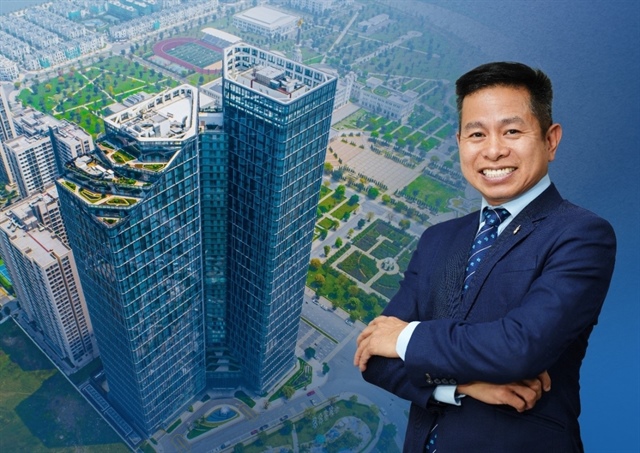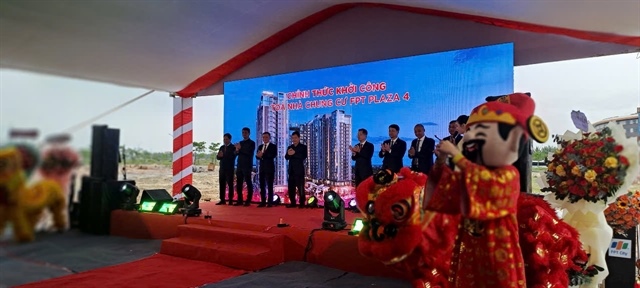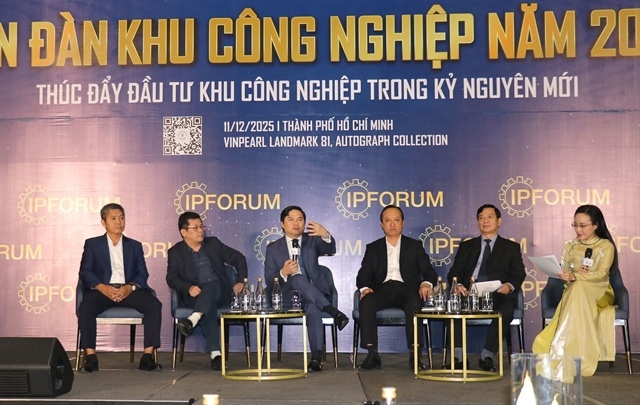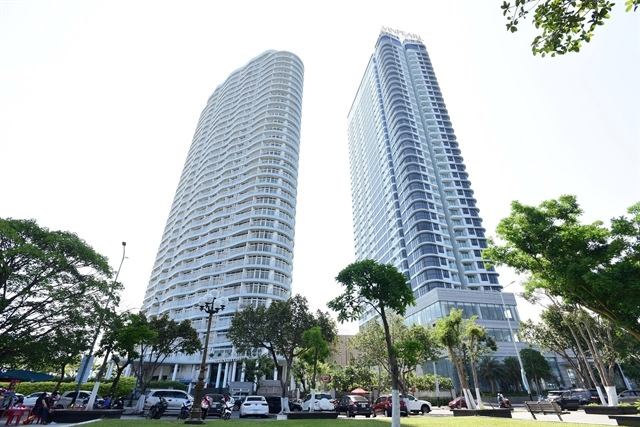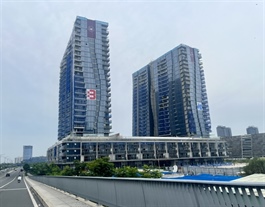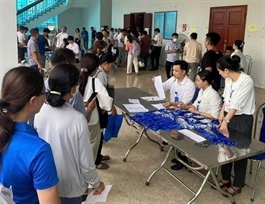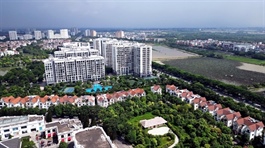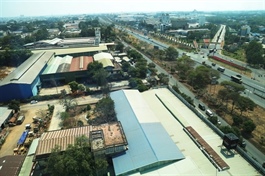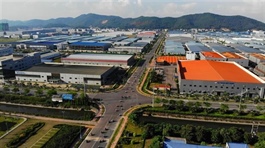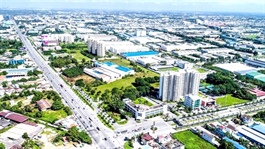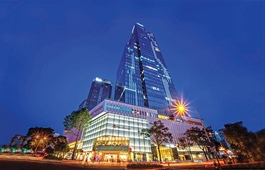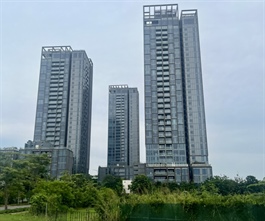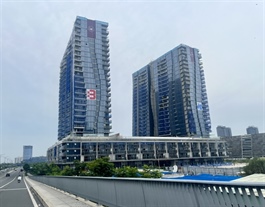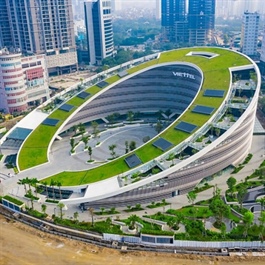Project strategy adjustments take shape within real estate
Project strategy adjustments take shape within real estate
Vietnamese and foreign real estate developers are actively expanding land and accelerating projects in the local property market.
With the goal of equivalent to $3.15 billion in revenue by 2025, Malaysian real estate construction group Gamuda Land is continuing to utilise its strategy of developing new projects, meeting the needs of high-end housing and modern urban areas in Vietnam.
Gamuda Land Vietnam chairman Angus Liew last month told The Star, a Malaysian newspaper, that Vietnam was not only a key market for the group but had strong growth potential in the coming years.
“Adjusting important laws in the real estate industry is expected to create a solid foundation for the Vietnamese market to continue to develop sustainably and attract large investments from international corporations,” Liew said.
At the start of the new year, Liew was pleased to announce the acquisition of a new 2.7 hectare plot of land in Haiphong, Vietnam’s third-largest city located in the north.
“This is the first time we have invested in Haiphong. We plan to develop high-rise apartments in this area, with an estimated value of $255 million. This land plot is located in Le Chan district, 1.5 hours from Hanoi, only two kilometres from Haiphong’s commercial centre, and near Cat Bi International Airport,” said Liew.
With limited supply in central Haiphong, Le Chan district offers an attractive opportunity with little competition from new development projects, he added.
Gamuda Land is currently implementing six quick turnaround schemes in Vietnam, out of 12 in Vietnam, the United Kingdom, and Australia, with total sale reaching $1.55 billion.
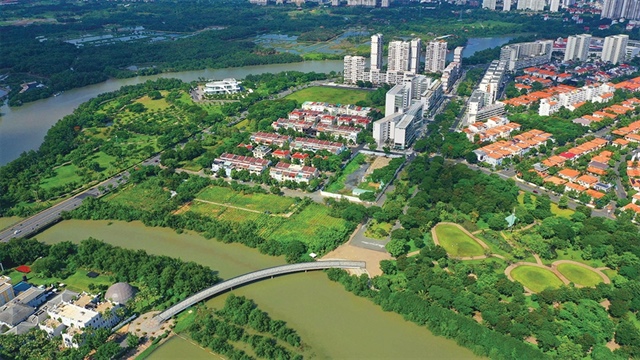
Analysts say that land in satellite cities is still abundant and affordable, Photo: Le Toan |
Undertakings in progress
Meanwhile, Phat Dat Real Estate Development Corporation had said it has recently paid off bond debt to restructure financial resources and reduce significant bond debt.
According to chairman Nguyen Van Dat, the developer in 2025 will implement large-scale projects, not only to strengthen its position but to diversify its investment portfolio.
“Quy Nhon Iconic continues to be a key initiative, while Thuan An 1&2 housing complex in Binh Duong province is completing final legal procedures,” Dat said. “In addition, strategic projects such as Q1 Tower (Binh Dinh province), Nhu Nguyet Commercial and Service Complex (Danang), Serenity Phuoc Hai (Ba Ria-Vung Tau province), and a resort complex in Con Dao Island will be important revenue drivers.”
Phat Dat aims to launch and hand over these schemes from now to 2027, and is expected to bring in revenue from $1.66 to $2 billion, with profit before tax at about $291 million, Dat added.
Besides this, project development strategies are also being adjusted by many businesses according to real needs from end-users.
In the last quarter of 2024, property developer Nam Long focused on handing over many ventures, helping profits increase to more than $52 million, exceeding the business plan for 2024, with the highest performance in three years.
As of December 31, Nam Long has $272.5 million in financial debt, of which the majority is long-term. The debt/equity ratio is low at 0.47 and ensures its business as safe.
This year, Nam Long continues to develop residential and commercial real estate in integrated urban area initiatives such as Waterpoint in Long An province; Nam Long-Dai Phuoc and Izumi City in Dong Nai province; and Nam Long-Can Tho in Can Tho city.
At the same time, the business is preparing to expand into new potential markets in the north and invest in more high-end product segments. The company has basically completed the necessary legal procedures for most key projects in 2025-2027, ready to open for sale when conditions are favourable.
According to Nguyen Xuan Quang, chairman of Nam Long Group, 2025 is considered the start of a new development cycle of the real estate market after the bottoming out during 2022-2024.
“In this new cycle, the market will be more transparent and sustainable with new laws being put into practice. This is also the time when the market will enter a period of maturity, which we can observe trends in countries that have gone through this stage,” Quang said.
“In the new cycle, transportation infrastructure will lead the satellite market around major cities. Once the potential increases, real estate value also changes. Currently, land in satellite cities is still abundant and affordable,” he added.
However, according to Quang, from 2026, the land use fee calculation formula applied according to the new price list will cause this cost to increase sharply, so the available land in satellite areas will also become increasingly scarce and valuable.
“It is predicted that the available land will be more sought after in the future, so the price of clean land will no longer be as accessible as before,” he added.
Also, Dat Xanh Group expects to have strategic changes in business plans, project development, and personnel apparatus from 2025. Accordingly, over the next two years, Dat Xanh prioritises the mid-end housing segment to meet the increasing needs of middle-income people.
Development caution
Economist Dinh The Hien said that in the context of the market not yet fully recovering, businesses need to have flexible operating strategies. “Financial restructuring cannot rely on just one solution but must combine many options such as negotiating with creditors, restructuring debt and finding strategic investors to ensure stable cash flow,” Hien said.
He recommends careful consideration when it comes to choosing assets to liquidate. “The decision to sell assets not only helps solve urgent capital needs but also must avoid damaging long-term business operations. Maintaining resources for sustainable development and preserving the trust of investors and partners is a vital factor in this challenging period,” he added.
This is the time for businesses to effectively reposition their strategies, ensuring a balance between the short and long term to overcome current difficulties and be ready to seize opportunities when the market recovers, he said.
Dominic Brown, Cushman & Wakefield’s head of International Research, said that amid varied economic dynamics, the outlook for Asia-Pacific in 2025 reflects a resilient real estate market.
“The Asia-Pacific real estate market is set for dynamic changes, with significant developments across the office, logistics and industrial, and capital markets sectors. The region is poised for growth, driven by varied economic trajectories and strategic market adjustments,” Brown said in a report released in Singapore last week.
According to the Foreign Investment Agency under the Ministry of Planning and Investment, in January, total registered foreign capital in Vietnam reached more than $4.33 billion, an increase of 48.6 per cent over the same period.
The real estate industry ranked second with investment of nearly $1.09 billion, accounting for 23.5 per cent of total registered investment capital.
Ho Chi Minh City has already announced that 34 out of 64 real estate projects in the city had difficulties resolved by the end of 2024. This could help open new supply in the future, with more than 10,000 apartments expected to be launched in 2025.
Meanwhile, in Hanoi, it is expected that about 18,700 new apartments and 2,100 townhouses will be launched within the year, mainly in suburban areas such as Gia Lam and Dong Anh districts. Suburban districts will lead the way in new supply thanks to infrastructure development and urban development planning.
Dong Anh and Gia Lam districts are expected to become inside urban districts, significantly increasing housing supply from large projects such as Vinhomes Co Loa and BRG Smart City.


